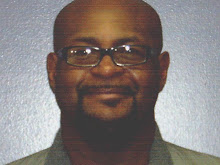It’s January, and I have resolved to … lower my heating bills. Easier said than done, you say, like most New Year’s resolutions.
With that said, the HVACs we live and work in use the most energy either heating or cooling the building, or lighting the rooms and powering the appliances and equipment in them. Normally, a third of the energy consumed in a building is used to heat or cool it.
Heating/cooling are controlled by thermostats, and most US homes have manual ones that are inefficient because they have to be manually adjusted. Newer digital thermostats use thermistors (thermal resistors) to detect changes in temperature. The thermistor changes resistance as its temperature changes, so by connecting it to some chips and other electronics, the digital thermostat can easily detect the room temperature.
You can save energy with a programmable thermostat from the first day its properly installed because you can tell it when to automatically make adjustments based on time and temperature.
Need help selecting a thermostat? Check out http://www.prothermostats.com/ and look under the resource library and the thermostat-buying guide for homeowners. The site contains great information to help you decide what to look for based on your home heating system, what kind of electrical wiring system you have and what features you might want in programmability.
The site carries information on multiple brands including Honeywell, White-Rodgers, LuxPro, Robertshaw, and Braeburn. It also has information on installation, wiring and disposal of hazardous mercury thermostats. How much do thermostats cost? They run from about $29 all the way to about $150, but you can buy a good mid-range device for about $50-$80. You can recoup these costs in a couple of months of lower bills.
Lastly, for those of you who haven’t read my first blog post, the purpose of myBTU.com and my website, which is under development, is:
• I’ll support and discuss what new and working with green technology
• I’ll post and point to information that will hold the fossil-fuel industry accountable for its pollution
• I’ll point out individual steps and products you can use, buy, investigate and invest in to conserve energy at home and at work. This will include product reviews and suggestions.
• I’ll push the use of valid alternative and renewable energy, including solar, wind, biomass, geothermal and nuclear power
• I’ll keep an eye on energy policy – worldwide, nationwide and state by state -- because without informed and enlightened governmental road map, we are doomed.
With those goals in mind, pay attention to the 2010 International Consumer Electronic Show, the world's largest consumer technology trade show, with more 2,700 exhibitors, in Las Vegas this week. The Consumer Electronics Association represents thousands of companies involved in the design, development, manufacturing, distribution and integration of consumer electronics products The must-see list for this year includes ebook readers, digital cameras, digital TVs, GPS devices and sound systems, and automotive smart systems, for communication and mapping.
CES has always had green technology area and, this year’s focus will be on smart appliances, many types of power-management devices and tools for managing home and industrial power consumption.
I’ll talk next week about some of the cool energy-efficiency devices unveiled at CES.
Monday, January 4, 2010
Subscribe to:
Post Comments (Atom)

No comments:
Post a Comment